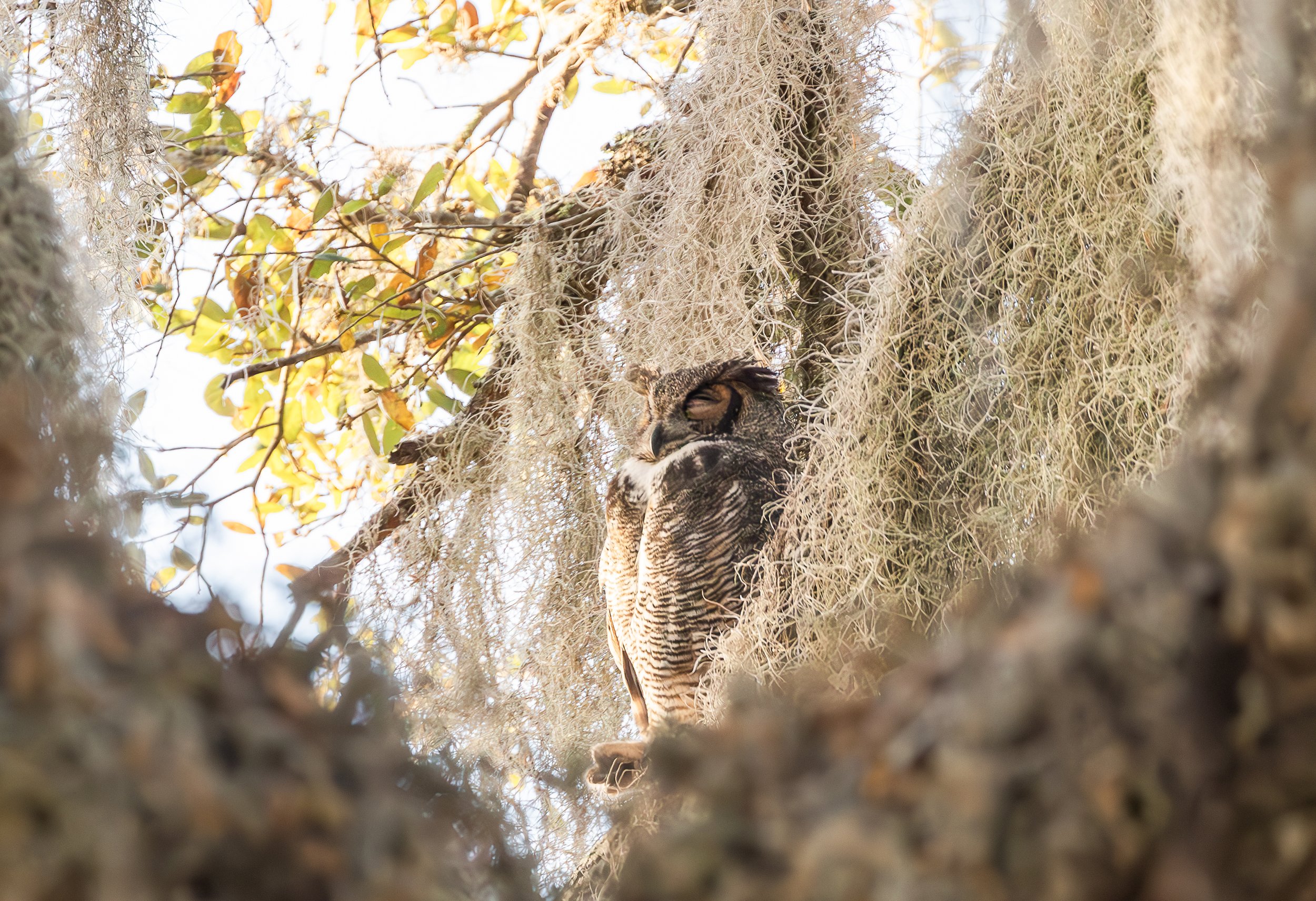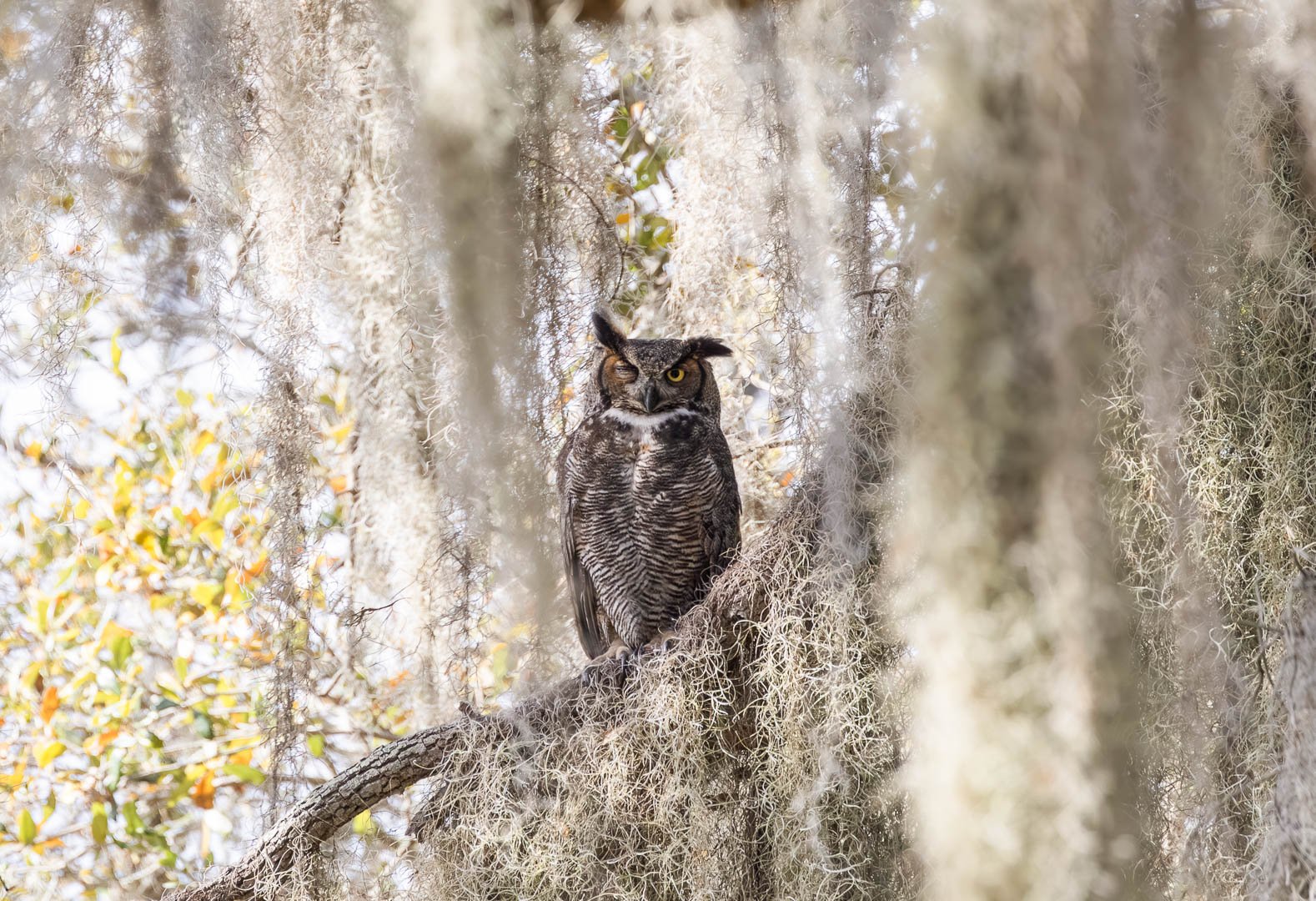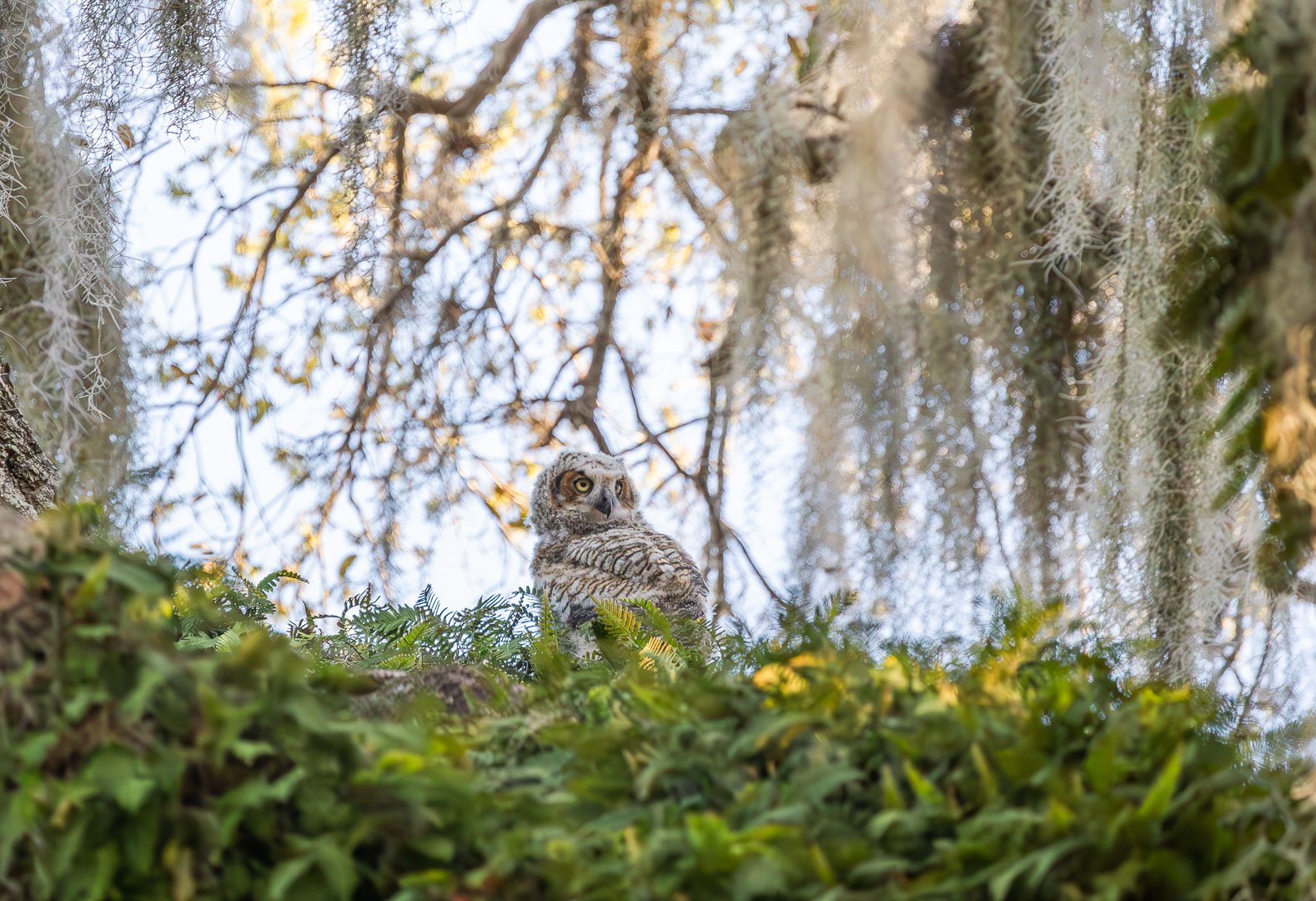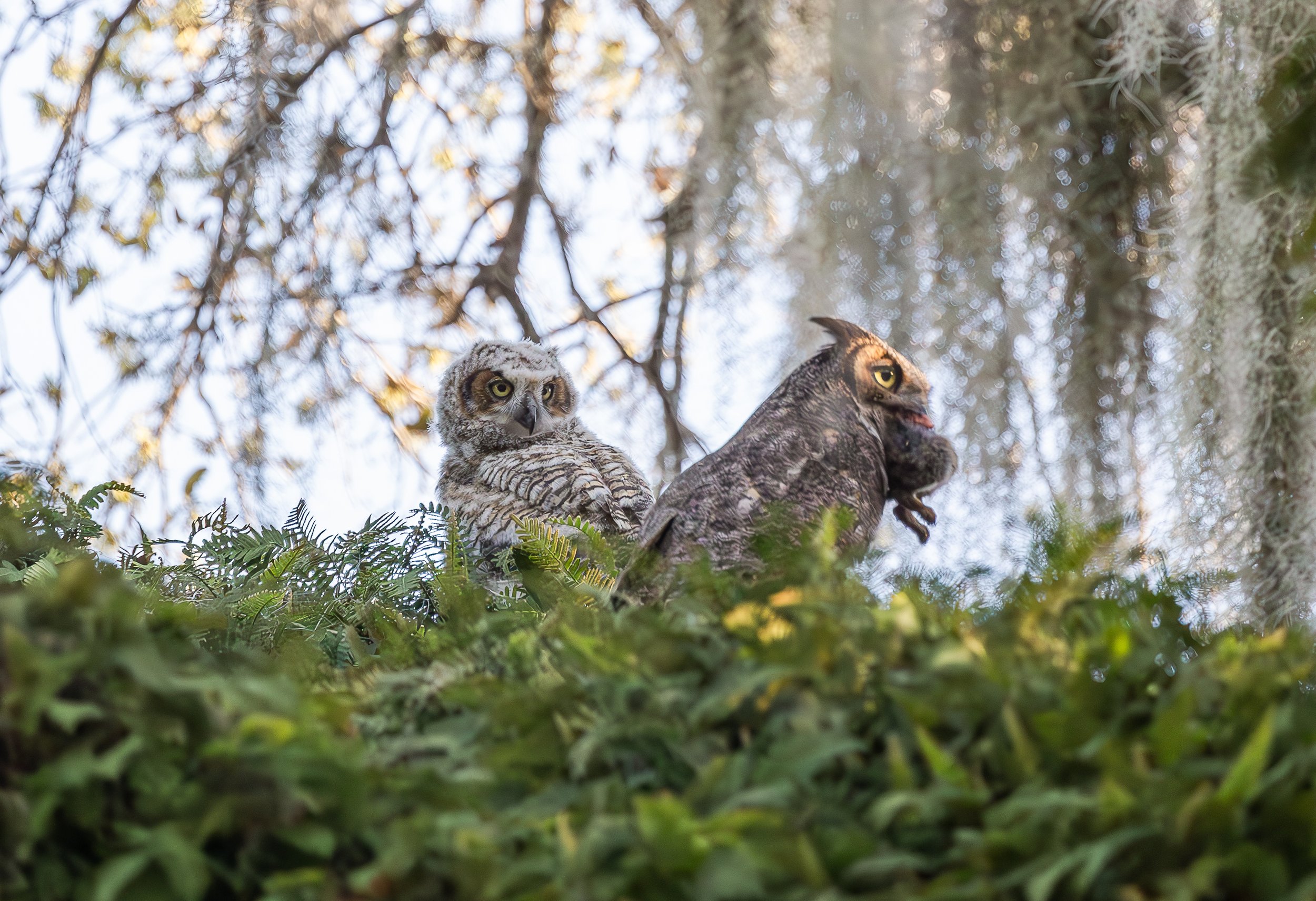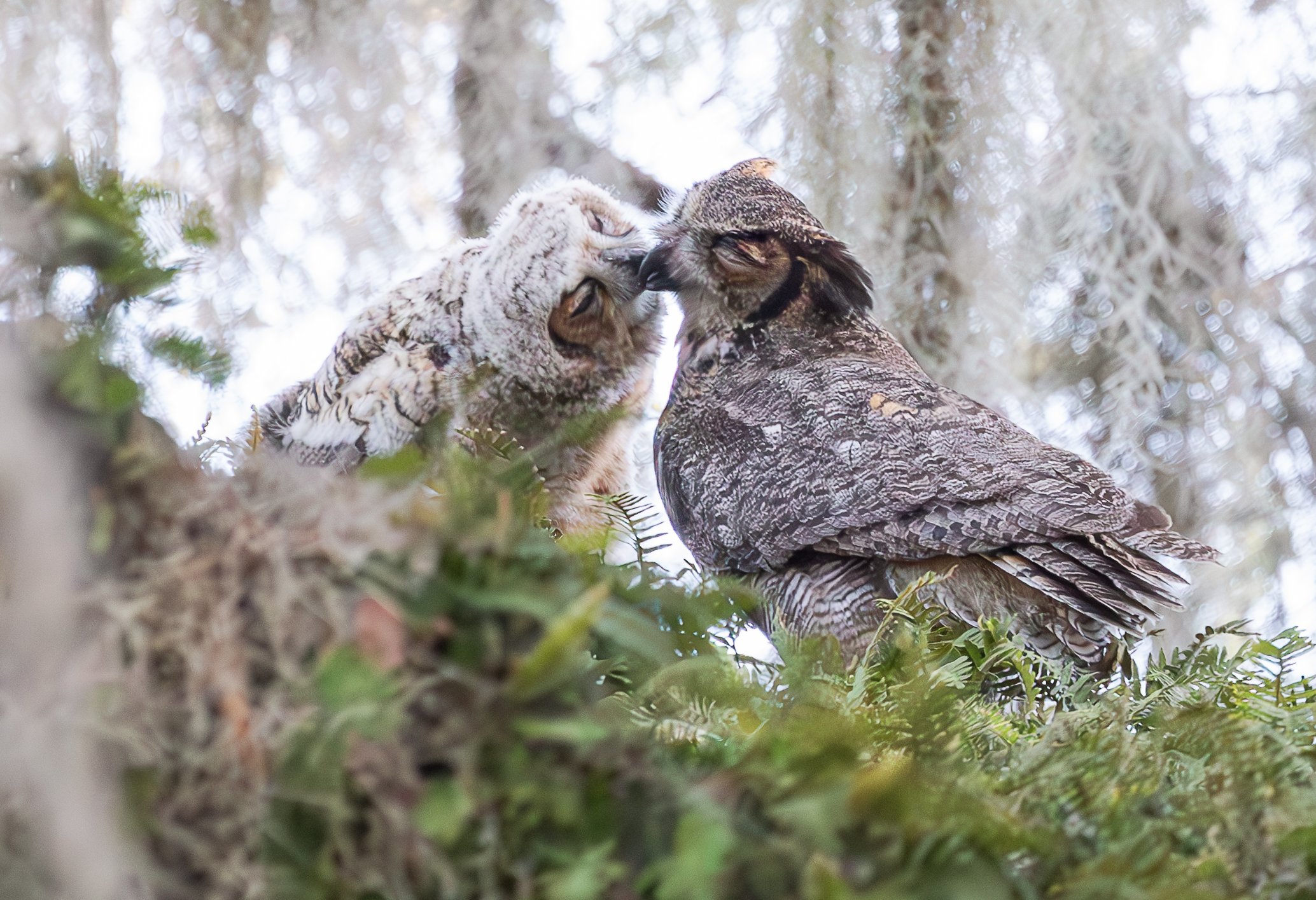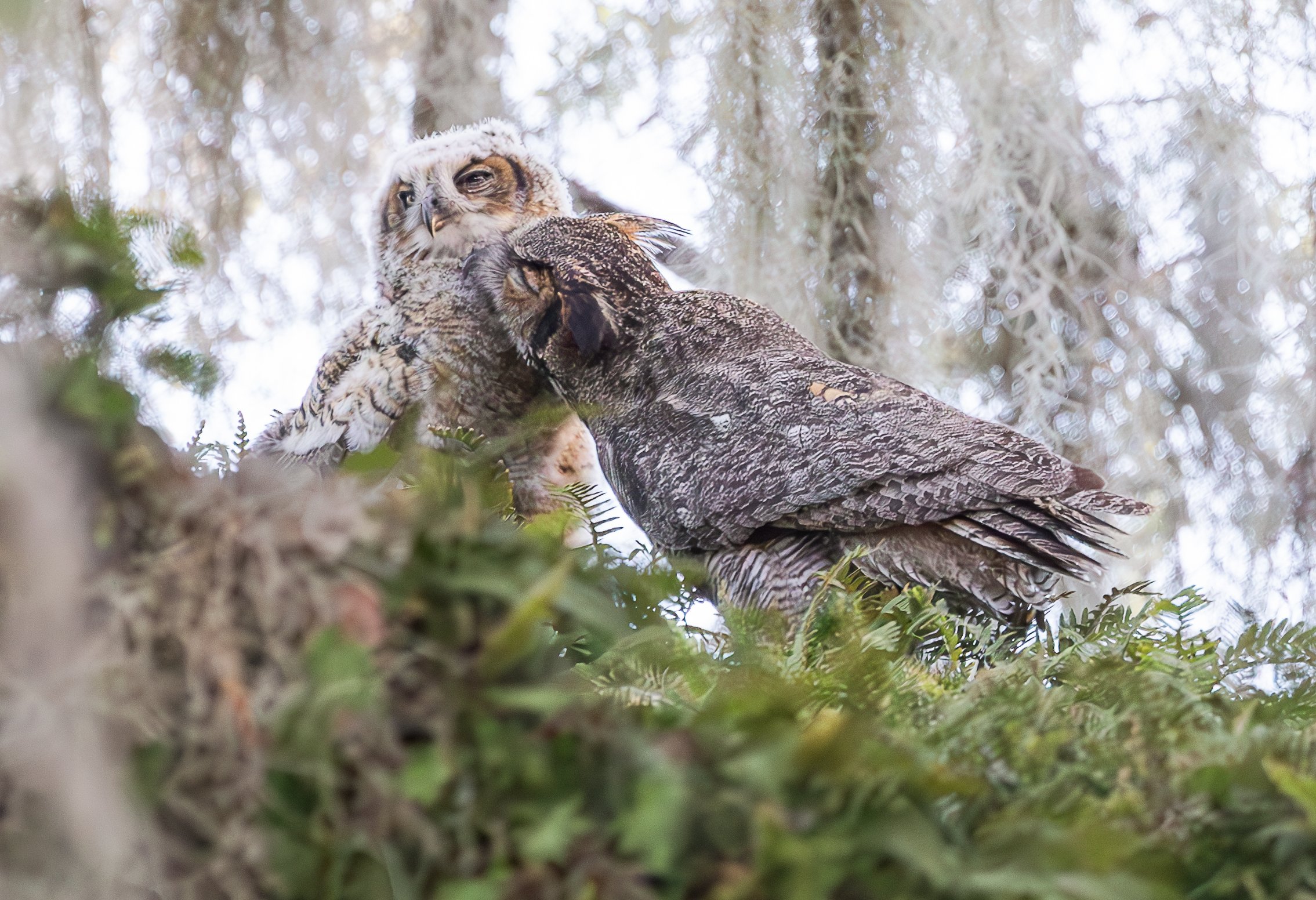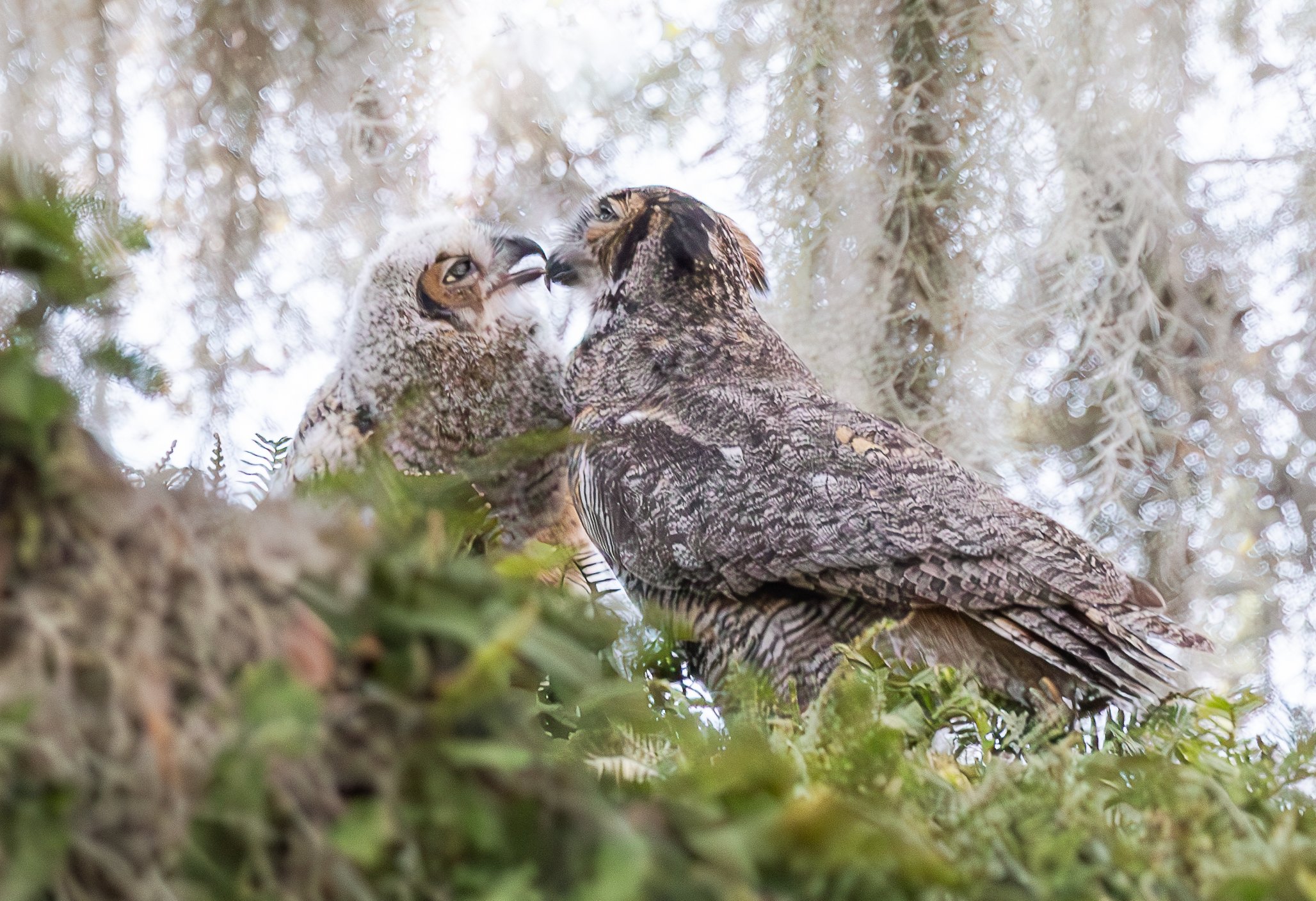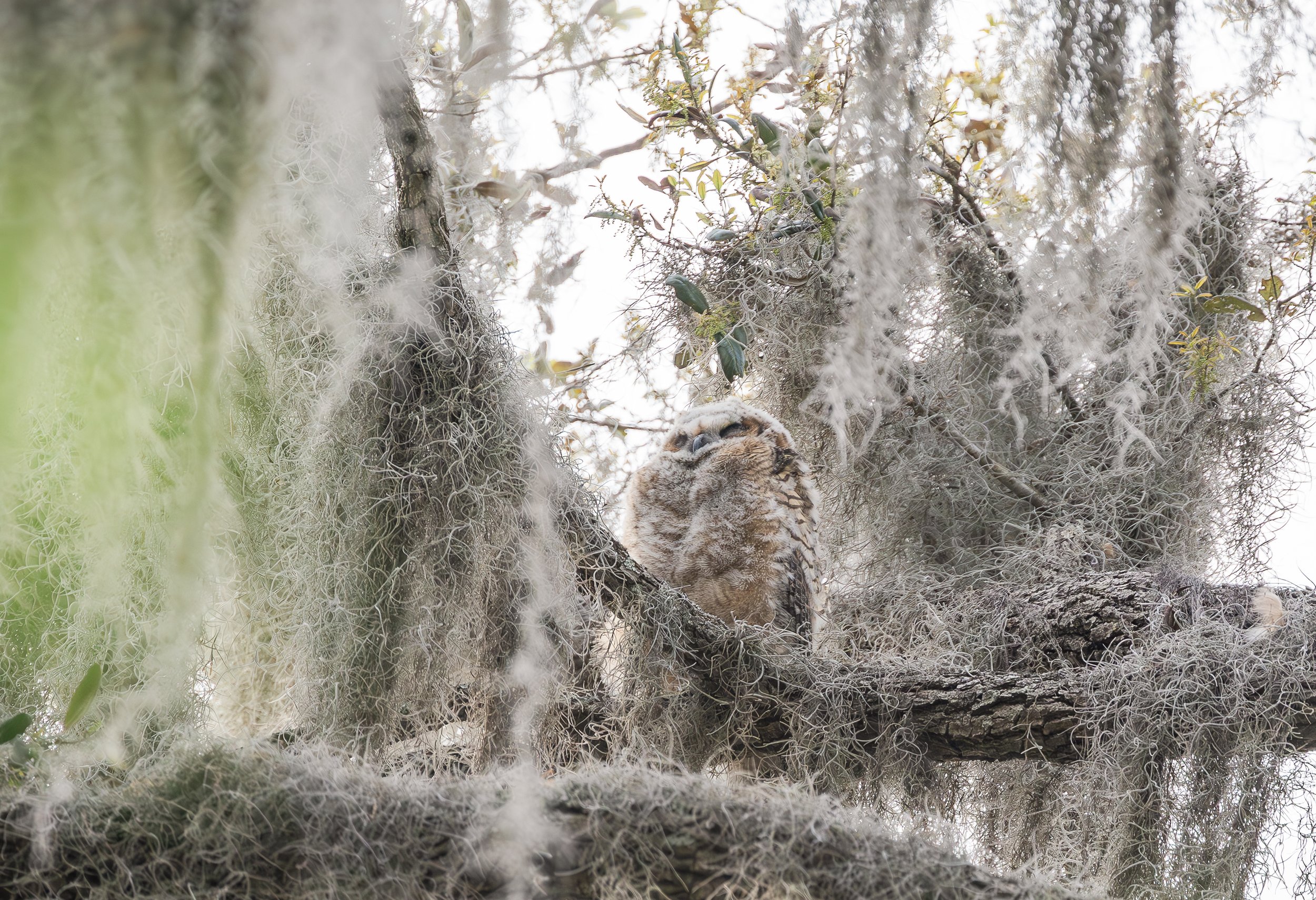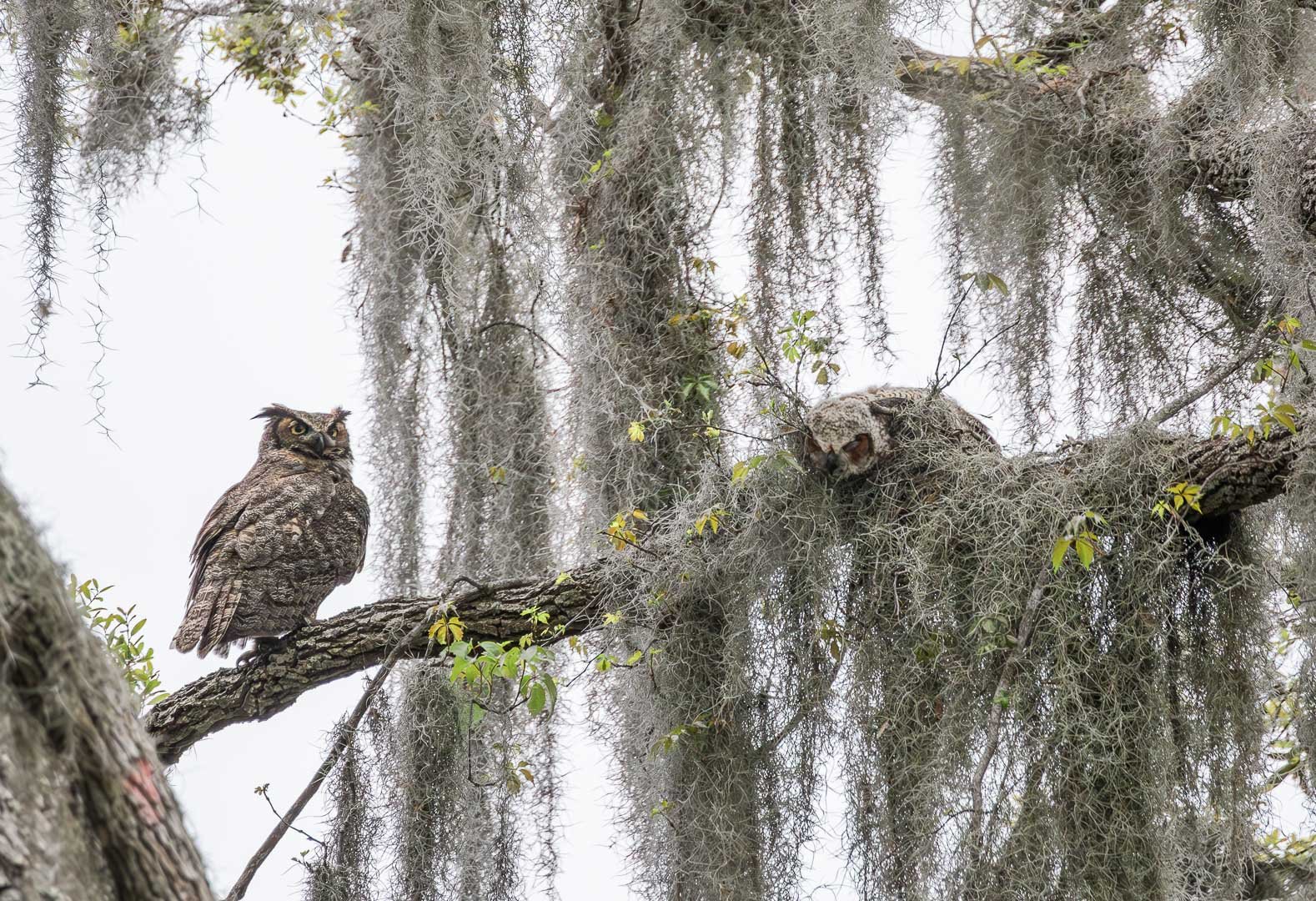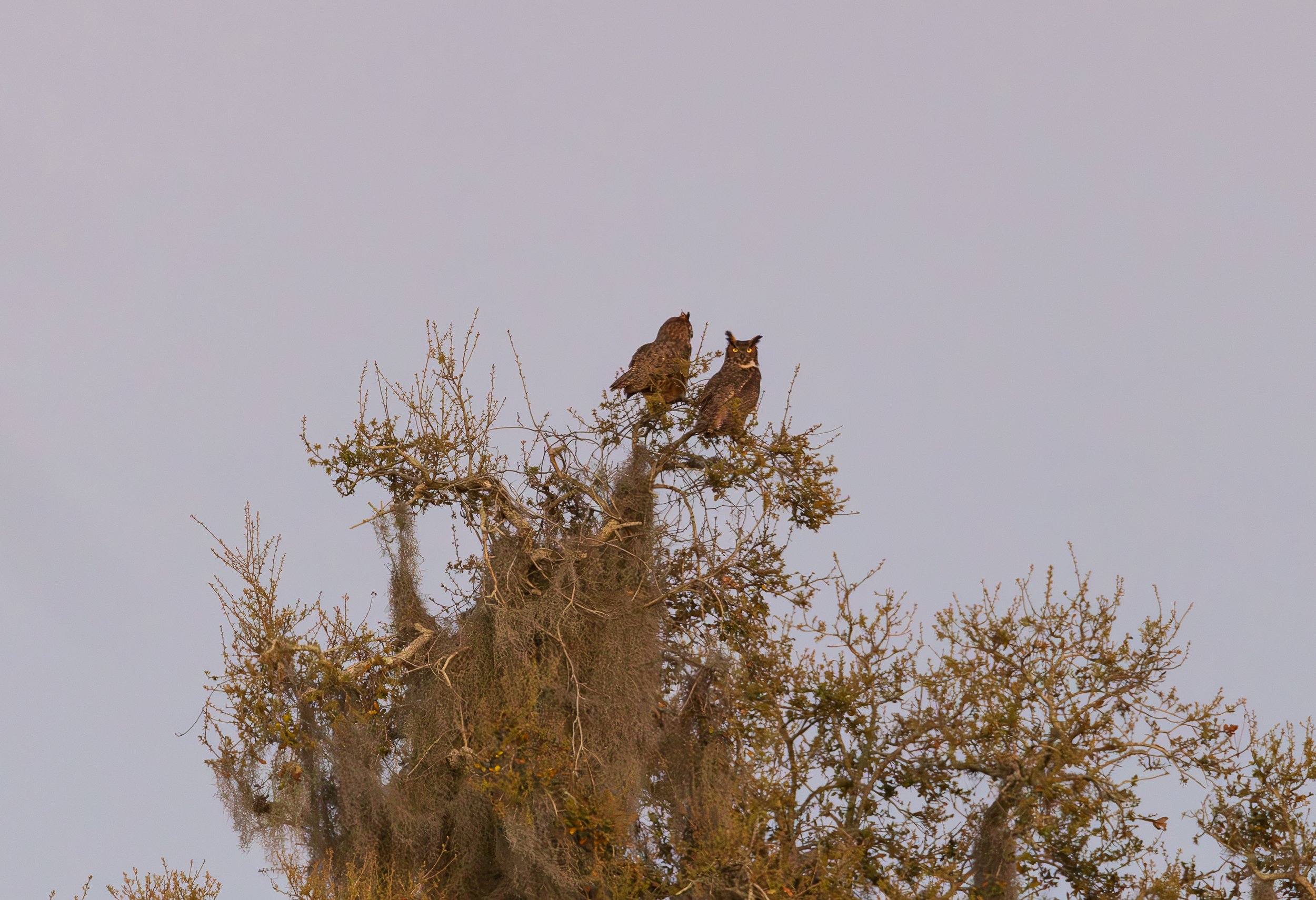The Hooting Season
Throughout February, I frequented Circle B Bar Reserve to observe a Great Horned Owl family. Great Horned Owls are one of the earliest nesting species in North America. These ‘tigers of the skies’ began their nest attempts as early as December. A precious owlet, born in early January, made its debut.
For the initial five weeks of its existence, the owlet remained concealed in the protective embrace of its surroundings, showcasing a masterclass in the art of natural camouflage.
Adorable owlet at approximately 5 weeks old covered with white down.
Naptime for the well-camouflaged owlet. Baby owls, require impressive amount of sleep, needing up to 20 hours a day.
Mom Owl was always around, blended seamlessly into her surroundings. Some days, it took me a good 10 minutes of careful scrutiny of the environment's patterns and shapes to notice her. She diligently guarded the nest, ensuring the safety of the precious owlet.
The nest became a fascinating hub of activity. As owlet continued to develop, she allowed the young one more independence. Owlet was seen leaving the nest and practicing flapping and exercising his wings - often hoping around nearby branches.
The owlet began to show his contour feathers. These feathers cover the insulating down and provide shape and camouflage. Note the brown wing bars now showing on the wings. At this stage the nestling is large enough to observe and track potential threats in the landscape as well.
What sets owl sleep apart from other animals is their ability to keep one eye open while resting. This unique feature allows them to maintain a level of awareness during sleep. With one eye open, this new mother can monitor the surroundings for any potential threats or prey.
Increasingly inquisitive, owlet actively shuffled and hopped around the nest to peer at objects in the landscape. I often saw him bobbing his head up and down and side to side when looking at something. This helps them judge distance with depth perception, which is an essential skill for the species.
The owlet has been maturing quickly. The nest became a place of learning and exploration with each day bringing on new discoveries…
Dinner is served.
During one of my visits, I was fortunate to witness them allopreening. It is when one bird cleans or preens the feathers of another. It is typically done around the head or neck - in areas the other bird cannot easily reach. Online information suggests allopreening may help strengthen the bond and is a way of showing affection, reinforcing the dominance of one bird over another, reducing stress between two birds, and of course improving cleanliness.
Male Great Horned Owl was usually seen roosting (perched or sleeping) away from the nest. He seemed to be fond of big-limbed trees overlooking an open area.
Male Great Horned Owl.
Great Horned Owls are ambush predators, preferring to sit still on a branch while patiently using their hearing and eyes to locate prey and narrow in on its movement.
The Dad-Owl is stretching its leg while preening, which shows off its talons, which hold a crushing power of 200 to 300 pounds per square inch.
Mom-Owl and the owlet have changed their tree residence. Both were seen peacefully napping high up in the canopy.
Great Horned Owlet hidden in the branches. At this time, he is still covered with some down feathers. He will need another 4-6 weeks until his feathers grow in and he’s able to fly well. By the following year, he will loose all of its juvenile plumage and will gain the darker brown plumage of its parents.
During my most recent visit, I discovered the owlet perched in the tree, asleep on its stomach. Contrary to the upright sleeping posture of adult owls for camouflage, owlets sleep on their stomachs. As owlets struggle to support the weight of their massive heads, they naturally opt for a flat sleeping position with their heads turned to the side, ensuring unobstructed breathing. This is a fascinating adaptation the young owls undergo for their well-being.
Don't worry...it's normal.
Mom-Owl was, of course, right there, providing attentive supervision.
Observing the owlet's growth, guided by the watchful eyes of its parents, has been a cherished opportunity to actively engage in the ongoing journey of life. As their story continues, I remain hopeful for the thriving legacy of this remarkable owl family.
Both the male and female Great Horned Owls perch atop the tree tops during the dusk hour.


